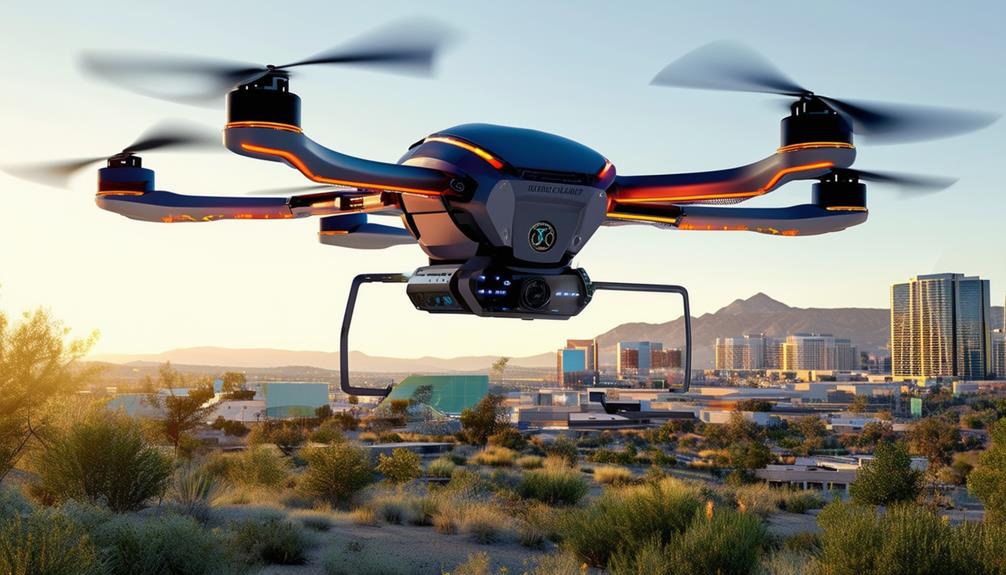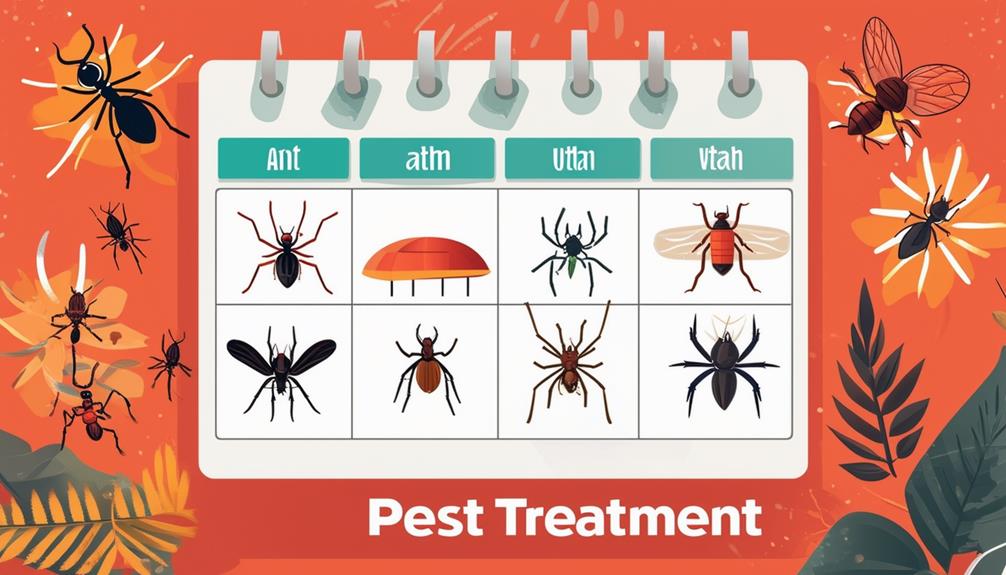Step back in time to witness St. Georges’ fight against mosquitoes, a battle aimed at eradicating diseases like malaria and yellow fever. Their joint efforts with the Public Health Service, focus on sanitation, and larvicide treatments have greatly reduced mosquito-borne illnesses. Explore the historical initiatives that led to substantial progress in mosquito control and disease prevention. Uncover the strategic measures and collaborative approach that have shaped the success story of St. Georges’ relentless mission against these tiny but formidable foes. More insights await into the evolution, challenges, and innovative strategies in mosquito control.
Key Takeaways
- Proactive measures in the 1920s reduced mosquito-borne diseases.
- Collaboration with Public Health Service for mosquito eradication efforts.
- Sanitation campaigns eliminated stagnant water sources.
- Larvicide treatments targeted mosquito larvae effectively.
- Sustained progress resulted in a significant decrease in mosquito-borne diseases.
Historical Background of St. Georges Efforts
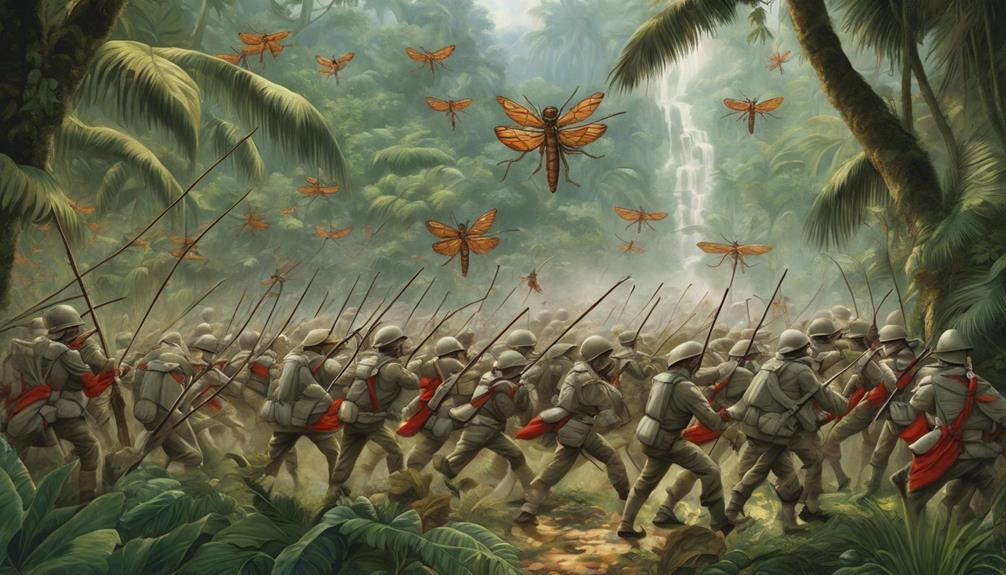
In the 1920s, St. Georges took proactive measures to combat diseases like malaria and yellow fever by initiating mosquito eradication efforts. The city, influenced by advances in tropical medicine, collaborated with the Public Health Service to implement thorough mosquito control strategies. Sanitation campaigns were launched to eliminate stagnant water sources where mosquitoes breed, while larvicide treatments targeted mosquito larvae. Through these efforts, St. Georges successfully reduced mosquito populations, leading to a significant decrease in mosquito-borne diseases in the region.
The city’s approach was multifaceted, incorporating community engagement, public education, and regular surveillance to ensure sustained progress. By prioritizing public health and embracing innovative solutions, St. Georges set a precedent for effective vector control in combating infectious diseases. The success of St. Georges’ early mosquito eradication campaigns serves as a historical example of how proactive measures and collaborative efforts can yield positive outcomes in public health initiatives.
Impact of Mosquito-Borne Diseases
Amidst the global landscape of public health challenges, the impact of mosquito-borne diseases stands out as a significant concern affecting populations worldwide. Mosquito-borne diseases like malaria, dengue fever, and Zika virus create a public health crisis, leading to millions of cases and hundreds of thousands of deaths annually. These diseases, transmitted by infected mosquitoes, particularly Aedes and Anopheles species, disproportionately affect vulnerable populations in tropical and subtropical regions.
The economic burden of treating and controlling mosquito-borne diseases is substantial, straining healthcare systems and productivity in endemic areas. Climate change and urbanization further exacerbate the spread of these diseases, presenting continuous challenges for disease control and prevention efforts.
Effective strategies for managing mosquito-borne diseases are essential in mitigating their impact on public health. The ongoing battle against these diseases requires collaborative efforts and innovative approaches to minimize their devastating effects on communities worldwide.
Evolution of Control Strategies
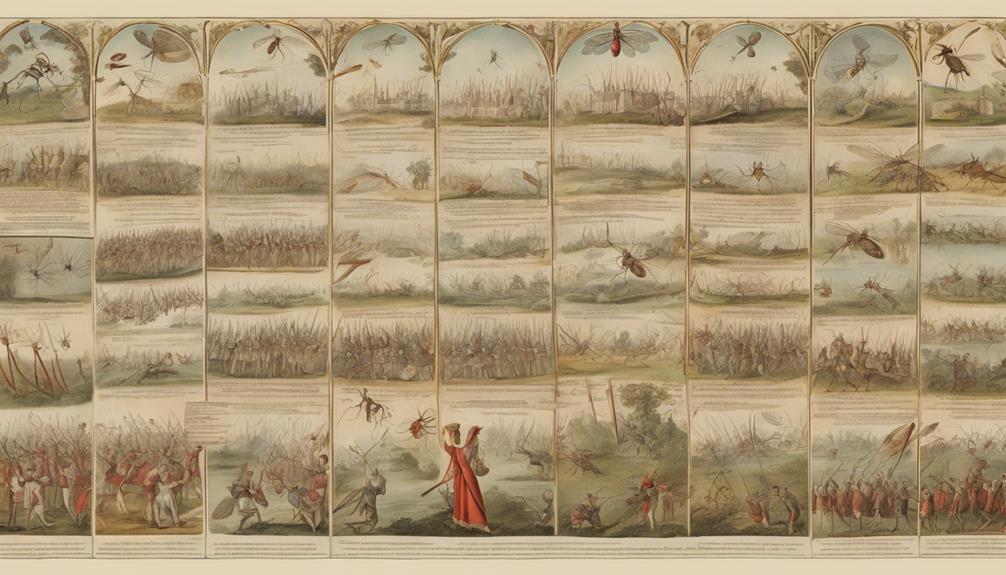
You can observe how control strategies in St. Georges have evolved from early larval source reduction techniques to more advanced integrated vector management approaches.
The implementation of insecticide spraying campaigns and larviciding programs has greatly contributed to mosquito control efforts in the region.
St. Georges has also embraced community involvement and environmental management practices to guarantee sustainable mosquito control measures.
Early Control Methods
During the early stages of combating mosquitoes in St. Georges, control methods evolved from manual removal of breeding sites to incorporating innovative strategies such as oiling water surfaces and utilizing larvicides. The public in St. Georges actively participated in maintaining sanitary conditions by eliminating stagnant water sources where mosquitoes bred.
American scientists introduced the practice of oiling water surfaces, which suffocated mosquito larvae, disrupting their life cycle. Additionally, the city started using larvicides like temephos to target mosquito larvae specifically in standing water bodies, reducing the mosquito population. St. Georges also embraced biological control agents such as Gambusia fish, which fed on mosquito larvae, aiding in population control.
These integrated pest management strategies marked significant progress in the early control of mosquitoes in St. Georges.
Modern Prevention Measures
The evolution of control strategies in combating mosquitoes in St. Georges has seen a significant shift towards modern prevention measures, incorporating integrated vector management strategies. This change entails the strategic use of insecticides, larvicides, and biological control agents in mosquito control programs.
Additionally, advanced technologies such as GIS mapping and remote sensing are now integral parts of surveillance systems, aiding in the early detection of mosquito breeding sites. Community engagement and education have emerged as important components in sustaining long-term mosquito control efforts.
Furthermore, the shift towards sustainable approaches underscores a commitment to environmentally friendly practices in mosquito control, reflecting the evolving landscape of public health interventions. Integrated vector management strategies are at the forefront of this modern approach, ensuring a thorough and effective battle against mosquitoes.
Ongoing Research Advancements
Advancing control strategies in mosquito management involves ongoing research into novel insecticides and genetic modification techniques targeting specific mosquito species. Scientists are exploring genetic modification techniques to create sterile male mosquitoes, reducing populations over time. Understanding mosquito behavior and breeding patterns is essential for implementing targeted control measures. Innovative technologies like mosquito traps with attractants and repellents are being researched to enhance control strategies. Collaborative studies between researchers and health authorities, including the Pan American Health Organization, are evaluating the effectiveness of new control methods in reducing mosquito-borne disease transmission.
| Research Advancements | Description | Impact |
|---|---|---|
| Novel Insecticides | Development of insecticides targeting specific mosquito species | Targeted control measures |
| Genetic Modification Techniques | Use of genetic modification to create sterile male mosquitoes | Reducing mosquito populations |
| Understanding Behavior | Research on mosquito behavior and breeding patterns | Implementing targeted strategies |
| Innovative Technologies | Exploration of mosquito traps with attractants and repellents | Enhancing control effectiveness |
Challenges in Mosquito Control
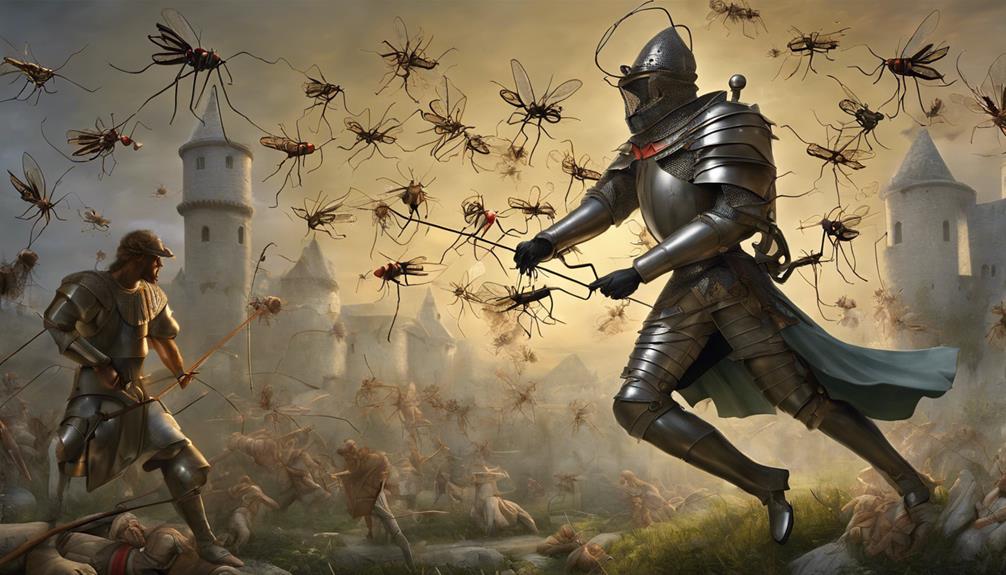
Decoding the intricacies of mosquito control in St. Georges poses a myriad of challenges for local authorities. Despite the historical efforts stemming from initiatives like the Pan American Sanitary Conference and Fred Soper‘s focus on primary health care and eradication efforts, modern challenges persist. One of the primary hurdles faced is the rapid adaptation of mosquitoes to interventions, making it difficult to sustain effective control measures. The unique urban environment in St. Georges further complicates mosquito control, as densely populated areas provide ample breeding grounds and hiding spots for these insects.
Moreover, the development of resistance to insecticides among mosquitoes in St. Georges poses a significant obstacle, hampering traditional control efforts. Inadequate funding and resources also impede the implementation of thorough mosquito control strategies, limiting the ability to combat mosquito-borne diseases effectively. Additionally, the impacts of climate change in St. Georges may exacerbate the situation by fostering more favorable conditions for mosquitoes to thrive, necessitating innovative approaches to mosquito control in the region.
Progress in Disease Prevention
Progressing from the challenges faced in mosquito control, advancements in disease prevention in St. Georges have been notable due to targeted vector control efforts and community-based programs. The reduction in mosquito-borne diseases in St. Georges can be attributed to various factors:
- Targeted Vector Control Efforts: Implementing specific strategies to control mosquito populations has been effective in reducing disease transmission.
- Community-Based Programs: Involving the community in disease prevention initiatives has increased awareness and encouraged active participation in control measures.
- Public Education: Educating the public about preventive measures and the importance of vector control has been instrumental in reducing the spread of diseases.
- Innovative Technologies: The use of advanced vector control technologies and surveillance systems has enhanced the effectiveness of disease prevention strategies.
- Financial Support: Adequate funding for eradication campaigns and prevention programs has been vital in sustaining the progress made in disease prevention in St. Georges.
These combined efforts have notably improved public health outcomes in St. Georges, setting a positive example for disease prevention in Latin America.
Future Directions and Innovations

You can anticipate groundbreaking advancements in mosquito control by embracing innovative genetic modification techniques.
Exploring novel insecticides and developing advanced trap designs are also crucial steps in this direction.
These directions aim to enhance sustainable pest management strategies and incorporate cutting-edge technology solutions for more effective mosquito surveillance and control.
Innovative Mosquito Control
In the domain of innovative mosquito control, advancements like genetically modified mosquitoes and the sterile insect technique are paving the way for more effective strategies in reducing mosquito populations and combating mosquito-borne diseases. These cutting-edge approaches hold promise in revolutionizing mosquito control efforts, offering new solutions to age-old problems. Consider the following key developments:
- Genetically Modified Mosquitoes: Engineered to decrease mosquito populations.
- Sterile Insect Technique: Utilized to suppress mosquito numbers.
- Drones for Targeted Control: Enhancing precision in locating and treating breeding sites.
- Novel Insecticides: Researching new compounds to overcome mosquito resistance.
- Smart Traps and Sensors: Providing real-time data for improved monitoring and control strategies.
These innovative methods are at the forefront of the fight against mosquitoes, showing great potential in the ongoing battle to protect public health.
Sustainable Pest Management
Sustainable pest management practices integrate eco-friendly methods such as biological control agents and natural predators to effectively control mosquito populations while minimizing environmental impact.
Integrated pest management strategies, endorsed by organizations like the Pan American Health Organization (PAHO), aim to reduce reliance on chemical pesticides.
The future of mosquito control involves innovative approaches such as genetic modification of mosquitoes to limit disease transmission and the use of drones for targeted interventions in inaccessible areas.
By balancing the control of mosquito populations with ecosystem preservation, sustainable pest management aims for long-term effectiveness.
Research and advancements in biological control agents and integrated pest management techniques will continue to play an essential role in ensuring effective and environmentally friendly mosquito control.
Advanced Technology Solutions
Innovative technology solutions are revolutionizing mosquito control strategies, paving the way for more effective and precise interventions in the battle against these disease-carrying pests.
Cutting-edge approaches such as genetic modification of mosquitoes aim to reduce disease transmission.
Testing of Wolbachia-infected mosquitoes shows promise in suppressing Aedes aegypti populations.
Drone technology enables targeted interventions in challenging terrains, enhancing control efforts.
Satellite mapping and remote sensing techniques help identify mosquito breeding sites, facilitating strategic control measures.
Automated mosquito trapping systems, equipped with sensors and cameras, bolster surveillance capabilities for more efficient vector control.
These advancements mark a significant shift towards a tech-driven approach in the ongoing fight against mosquitoes and the diseases they spread.
Frequently Asked Questions
What Is the History of the Mosquito Fighter Bomber?
The history of the Mosquito Fighter Bomber spans World War II, showcasing evolutionary adaptations in aircraft design. Its role in biological warfare, aided by technological advancements, highlights the fusion of military strategies with cultural practices, solidifying its legacy.
How Did Native Americans Survive Mosquitoes?
You survived mosquitoes by mastering native strategies with natural remedies, cultural practices, and modern solutions. By using plant extracts, smoke, specific clothing, settlement locations, netting, and skin covering, you outsmarted those pesky biters.
How Many De Havilland Mosquito Were Shot Down?
During the Battle of St. George’s Channel, German forces shot down a total of 11 De Havilland Mosquito aircraft. The losses underscored the risks faced in combat, prompting the need for strategic combat strategies and military tactics.
How Did People Deal With Mosquitoes in the 1800s?
Back in the 1800s, folks coped with mosquitoes using natural remedies, protective clothing, smoke tactics, and mosquito nets. They relied on adages like “an ounce of prevention is worth a pound of cure” to combat these pesky insects.



